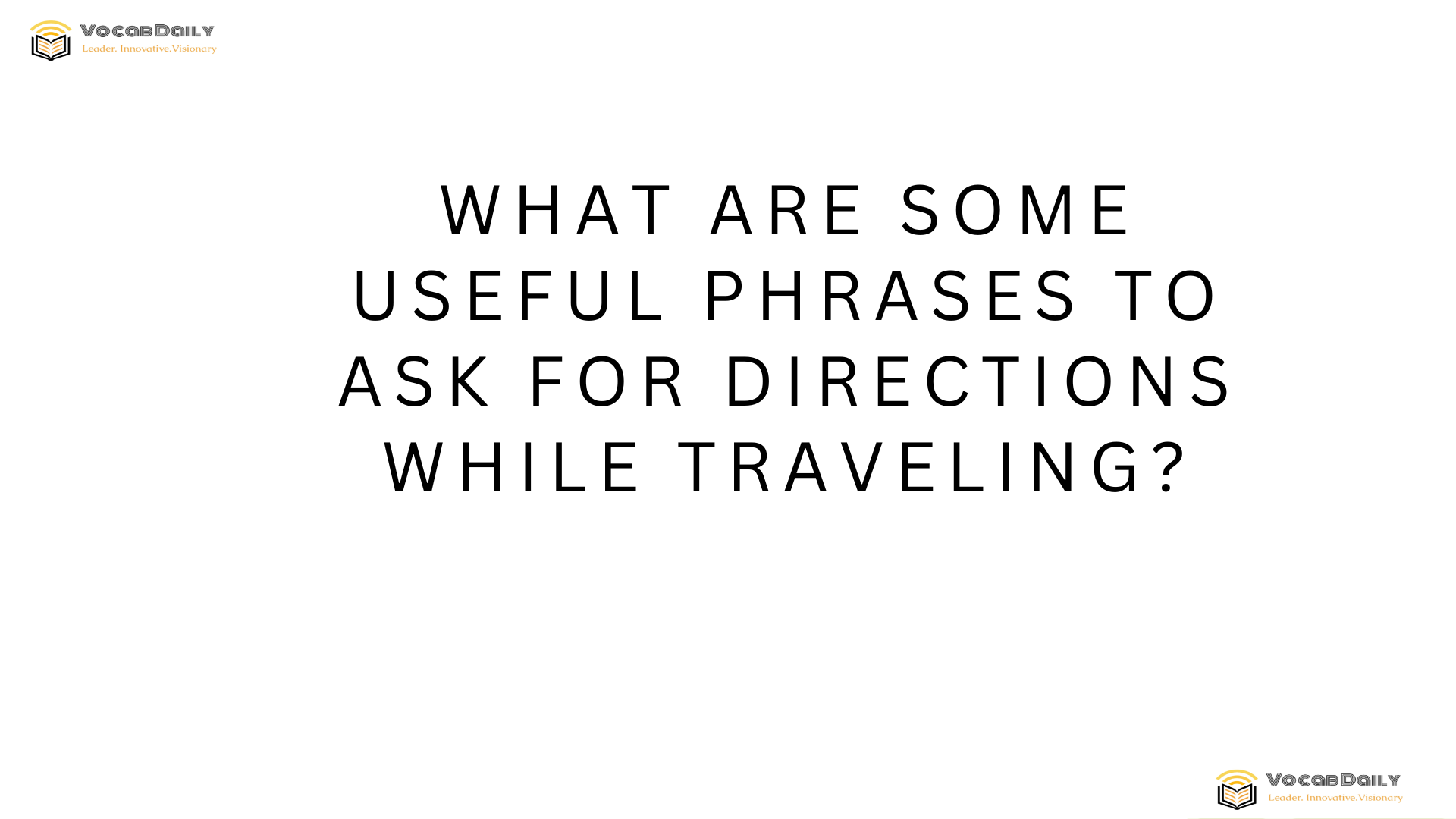Why Knowing Direction Phrases is Essential for Travelers
When traveling to a new city or country, one of the most common challenges is finding your way around. Language barriers can add to the confusion, especially when you need to ask for directions. Having a set of useful phrases ready not only helps you navigate unfamiliar places efficiently but also enables you to connect with locals in a polite and respectful manner. This article provides key phrases that you can use while asking for directions, enhancing your travel experience and making every journey smoother.
Basic Phrases to Start Asking for Directions
Starting a conversation when asking for directions can feel intimidating, but using polite and clear phrases makes the interaction easier. Here are some fundamental sentences to get you started:
“Excuse me, could you help me?”
“Can you tell me how to get to…?”
“Where is the nearest…?”
“I’m looking for this address.”
“Do you know where I can find…?”
These phrases are polite and straightforward, which encourages people to assist you willingly.
Common Questions to Ask About Public Transportation
Many travelers rely on buses, trains, or subways to explore. Here are important phrases to help you navigate public transport effectively:
“Which bus goes to the city center?”
“Is this the right train for the airport?”
“Where can I buy a ticket?”
“How often does the subway run?”
“Does this bus stop near the museum?”
Asking these questions will make using public transit less stressful and more convenient.
Phrases to Clarify Directions
Sometimes, directions can be confusing or unclear. Use the following phrases to ask for further explanation or confirmation:
“Can you please say that again?”
“Do I need to turn left or right?”
“How far is it from here?”
“Is it within walking distance?”
“Should I take the first or second street?”
These questions help ensure you understand the path you need to take without mistakes.
Useful Directional Words and Phrases
Knowing specific directional vocabulary will help you follow or give directions more accurately. Here are some key terms:
“Straight ahead”
“Turn left”
“Turn right”
“At the corner”
“Next to”
“Across from”
“At the traffic light”
“Behind the building”
“Near the park”
Understanding and using these phrases can make communication smoother when asking for or giving directions.
Polite Expressions to Show Appreciation
Always remember to thank locals who take the time to assist you. Politeness goes a long way in creating positive interactions. Here are common expressions to show your gratitude:
“Thank you very much.”
“I really appreciate your help.”
“Thanks for your time.”
“That’s very kind of you.”
“Thank you for the directions.”
Using these phrases not only shows respect but also encourages a helpful atmosphere wherever you travel.
Asking for Directions in Different Situations
Travelers often encounter various scenarios when seeking directions. It’s useful to tailor your questions based on the setting:
At a train station:
“Which platform is the train to…?”
“How long is the wait for the next train?”
On the street:
“Is this the way to the museum?”
“Can you show me on the map?”
At an airport:
“Where can I find the taxi stand?”
“Which way is baggage claim?”
Adjusting your questions according to the environment helps you get more relevant information quickly.
Tips for Asking Directions Confidently
Asking for directions might feel challenging, especially in places where the language is different from your own. Here are some tips to help you feel more confident:
1. Speak clearly and slowly to make yourself understood.
2. Use simple vocabulary whenever possible.
3. Carry a map or have a navigation app ready to show what you’re asking about.
4. Use gestures like pointing or nodding to support your questions.
5. Always approach someone who looks approachable or is nearby information centers.
By following these tips, you can improve your communication and get directions without frustration.
Practicing Phrases Before Your Trip
Preparation is key to feeling comfortable while traveling. Practice key direction phrases aloud before your trip. This will help you recall them easily and pronounce words more clearly. You can also listen to audio examples or language apps to improve your accent.
Try role-playing with a friend or record yourself asking and answering questions about directions. The more you practice, the more natural it will feel when you need to use these phrases abroad.
Using Technology Alongside Verbal Phrases
Although asking locals for directions is a great way to immerse yourself in a culture, technology can be a useful companion. Smartphone apps like maps or translation tools can help confirm directions or translate phrases in real time. Combining your verbal skills with these tools ensures you have reliable help wherever you go.
For instance, you can use a translation app to show the phrase, “Where is the nearest bus stop?” in the local language. This reduces misunderstandings and shows effort, which people appreciate.
Expanding Your Travel Vocabulary for Better Navigation
Apart from asking for directions, learning related travel vocabulary is helpful. Words like “landmark,” “intersection,” “roundabout,” or “bridge” allow you to understand instructions more easily. Additionally, getting familiar with words relating to transportation methods like “taxi,” “bus stop,” and “station” supports faster comprehension.
Regularly updating your travel vocabulary toolbox aids with spontaneity and confidence during any journey.
Also check out VocabDaily workbook collections.

Leave a Reply